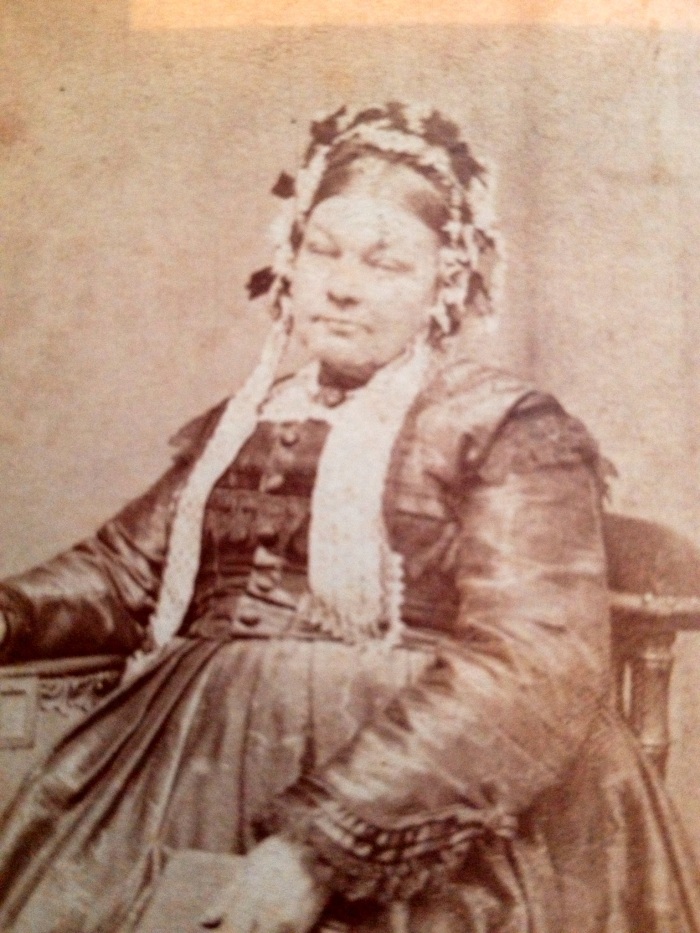Sometimes accidental finds – when you are looking for something else entirely – are occasionally the most intriguing and eye-opening to say the least!
Occasionally we see in newspaper reports now of ‘abductions’ of young girls by older men, running off willingly with them, infatuated with an ideal or what they think is love.
Whilst I made my way through my great great grandmother’s Scotter family, I found myself diverted to the teenage daughter of one of her sisters – Martha Ann Grantham, nicknamed Pattie. There seemed to be a streak in this particularly for women that did not conform and lived, shall we say, on the edge – of society and of the law!
I’d already known she never married the man she claimed to be her second husband but what I did not expect to find was news of her ‘abduction’ by a man named William Brownill and reported in the Sheffield and Rotherham Independent on 19 December 1885.
The headline screaming ‘Serious Charge against Sheffield Auctioneer’ preceded a vast article outlining his Trial. What became clear though was that ‘abduction’ was not quite the correct description.
Martha was 15, about to turn 16, and working in service at a public house when she met Mr Brownill and his wife who were both regular visitors to this particular establishment. A friendship it would seem was struck up between Martha and the Brownills including Mr Brownill – married and a father of 4 young child – taking 15 year old Martha to the theatre.
On Sunday 15th October 1885 plans were afoot when Mr Brownill approached Martha and asked her to go to London with him, presenting her with a diamond ring for her to wear and asking her to leave a note for her employer to say she was going to Liverpool (to throw her off the scent. Martha had cousins in Liverpool). They met in Chesterfield where Martha was encouraged to buy a wedding ring after which they travelled to London, where it was said there was ‘no further impropriety’ other than a kiss.
His wife, however was quick to find out, and followed him to London only to find they had left and Martha had returned to Hull, stating plainly to her parents that she was now ‘Mrs Brownill’. When confronted though by Martha’s mother, her employer and indeed his own wife, Mr Brownill is alleged to have denied it all and subsequently became abusive to all concerned.
After further ‘questioning’ though he maintained that Martha had told him she was 18 and in attempt to avoid scandal offered to pay Martha’s parents £100 in restitution.
The matter however came to the attention of the police and a trial commenced.
Martha maintained she was asked to go to London with him and she was to pass as his wife. They spent several days in London, staying in various hotels and going to the theatre; admitting in Court that she told Mr Brownill she was 18 – supposedly as a ‘joke’. She did however confess that she had gone willingly and never told him she wanted to go home.
She had indeed written Mr Brownill a letter stating:
“Dear William – You would get to know that I had come to Hull. I went to Liverpool first to see if Mrs Edge had been there. No one knew anything about her. But when I got to Hull they played the devil with me. But, my darling, how did you get on? I shall never get over this; it will kill me. I shall not stop in Hull for they are treating me shamefully. I had first to tell them that I was married, for there was no living with them. Now, my darling, what I am to do? Will you get me a situation wherever you can? It does not matter if it is a kitchen maid. Will you write to me before Tuesday, or I think I shall drown myself, for I have had nothing on my lips since I had breakfast with you. Now, my darling, do not let this trouble you, for it is not your fault, I love you all the more. There is many a tear shed over this letter; your face is ever before me whenever I look up. Mrs E has wrote such a letter to my mama telling her the biggest lies that ever was uttered. But never mind! They have turned me on the streets, but I have a pair of hands and can work for my living. Not a friend that I had in Hull will look at me now. But, my darling, do not forsake me, for I am a bad girl. I hope that this has not caused any unhappiness between you wife and yourself. Now, my darling, do not let this trouble you mind. So, good-bye, love. Excuse bad writing, as I am trembling so. I remain, your ever loving. PATTIE G xxxxxxxxxx
When the letter was read in Court, it was laughed at as the delusions of a child and Mr Brownill continued to deny any such a plot to go to London, to maintain the pretense of marriage – albeit for only three days – and indeed that any impropriety went on.
Mr Brownill, found guilty of abduction although deceived she was 18, was subsequently sentenced to six weeks hard labour.
Three years later, at the age of 18, Martha married her first husband – another older man – 29 year old Charles Proctor and bore him three daughters before he died in 1891. She then went on to live with a man called Tom Halliday who left her in some time before the breakout of World War One.
She died in 1932.
 Mary Ann (nee Lilley) (1802 – 1875)
Mary Ann (nee Lilley) (1802 – 1875)